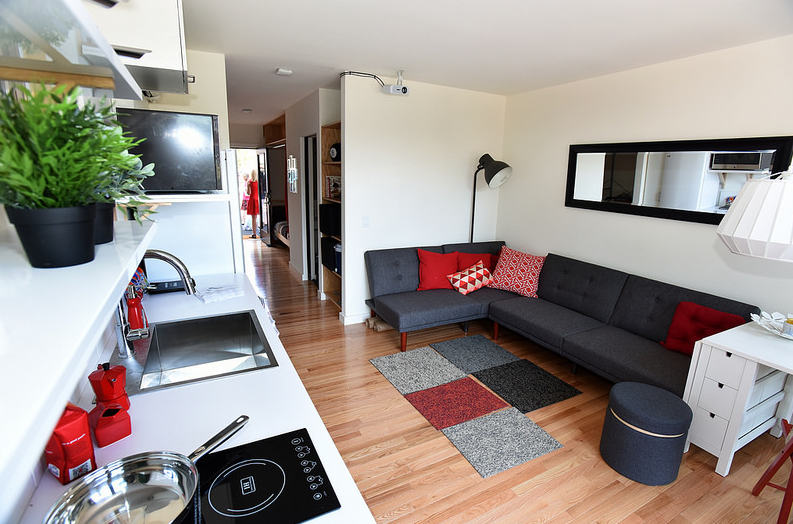Imagine Boston 2030: Can smaller housing support a growing City?
Imagine Boston 2030 has heard loud and clear that housing affordability is a top issue for Bostonians.
The cost of housing is putting pressure on people at many different income levels. Since we began discussions around housing last fall, we’ve heard from longtime residents who are seeing their neighborhoods change, young professionals who are debating whether or not to stay in the city as they begin to raise a family, and many others contending with the issue of rising housing costs. Imagine Boston presents an opportunity to increase housing affordability and address displacement while looking for creative ways to build a variety of housing that fits the needs of Boston’s diverse population. So what are some of the ideas?
In 2014, Mayor Walsh rolled out Housing a Changing City: Boston 2030, the City’s strategy to responsibly plan for our projected growth to over 700,000 residents by 2030. In the plan, the Mayor outlined a goal of reaching 53,000 new housing units needed to accommodate that growth. Enter the Housing Innovation Lab, created by the Mayor under the Office of New Urban Mechanics as a way to bring design thinking and innovation to help solve some of Boston’s housing challenges.
The Housing Innovation Lab has been tasked with exploring ideas that have the potential to drive down the cost to build, buy, and own homes in Boston. One of the big (or small!) ideas they’ve come up with so far is the Urban Housing Unit (UHÜ), pronounced “yoo-hoo."
The 385-square-foot-unit has gained a lot of traction recently and is a sneak-peek at just one of the creative solutions the Housing Innovation Lab is considering to address Boston’s housing needs. With separate spaces for sleeping, bathing, storage, and entertaining, the UHÜ is built so that four units could be stacked on top of each other or even combined. An added benefit to the UHÜ? It’s price-conscious. Designers anticipate that construction costs could fall somewhere between $40,000 and $70,000, making a home purchase significantly cheaper than buying a typical apartment in Boston. For average Bostonians looking to buy, this could make the difference between renting and homeownership.
Still, the Housing Innovation Lab recognizes that for most, a home under 400 square feet would be an adjustment. That’s why, over the past few months, the UHÜ has been traveling on a roadshow to different neighborhoods throughout the city that will culminate in an exhibit at the Boston Society of Architects from November 5– December 15, offering residents the opportunity to tour and experience the compact housing unit first-hand.
Other initiatives being explored to promote housing affordability include:
- Piloting a density bonus policy that would allow developers to build more units in exchange for increasing the number of income restricted units in the building.
- Creating interactive resources to help first time home buyers compete in this challenging market.
In addition to efforts to increase the amount of new units, Imagine Boston 2030 will also work to preserve existing affordable units.
- This May, Mayor Walsh announced the Acquisition Opportunity Program which provides loans to ensure that property owners maintain affordable rent levels for low and middle income families and maintains tenancies of current tenants in good standing. The $7.5 million investment is another step towards preserving more affordable housing for Bostonians.
- Boston is also supporting community land trusts, where nonprofits acquire and develop land for community benefits. Because a land trust retains ownership of the land underneath buildings and can restrict resale prices, the model helps ensure that neighborhood cultures remain intact and Boston’s identity remains vibrant and unique.
What do you think about these initiatives? UHUs and community land trusts are just some of the ideas under consideration for expanding quality, affordable housing opportunities for Bostonians. What other ways could the City help make neighborhoods more affordable? We asked Bostonians for their ideas this summer and are excited to explore strategies for addressing affordability – one of their top concerns.
Get involved! Catch our engagement team and staff at an event in your neighborhood, and connect and share your ideas with us on Twitter, Facebook, and Instagram using #ImagineBoston. And don’t forget to sign up for Imagine Boston updates!




